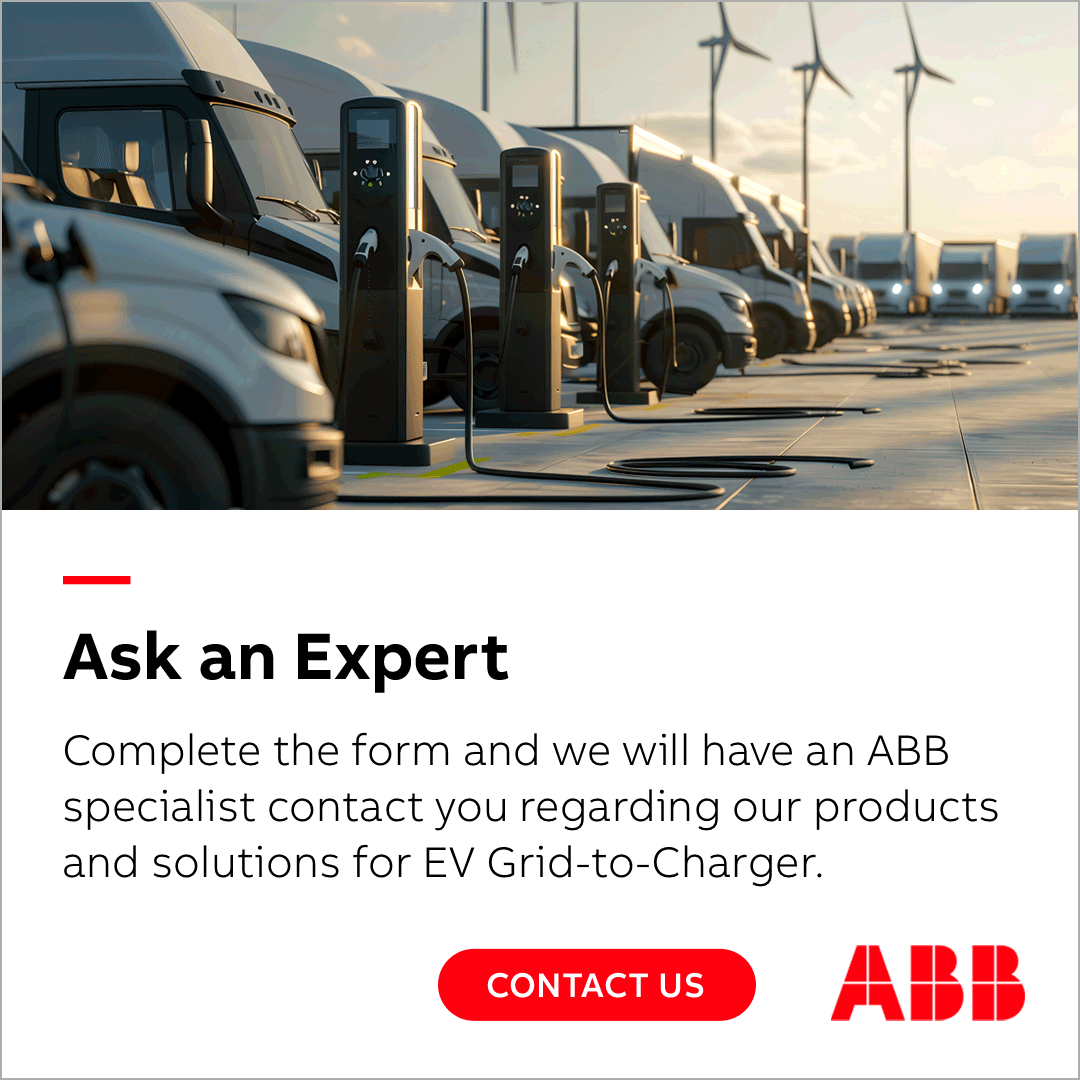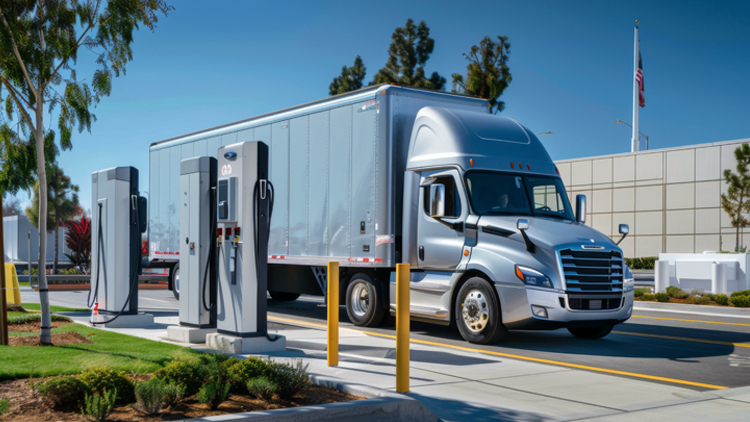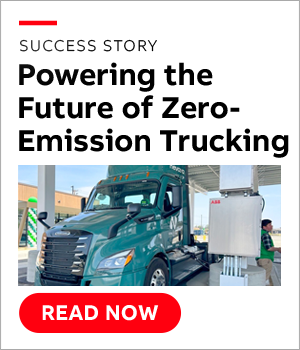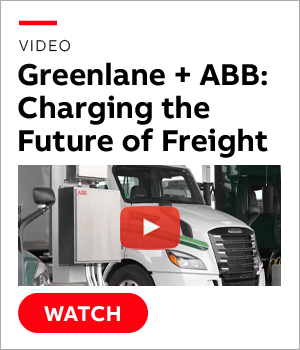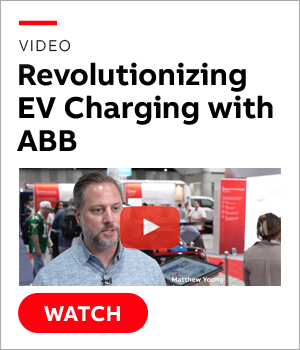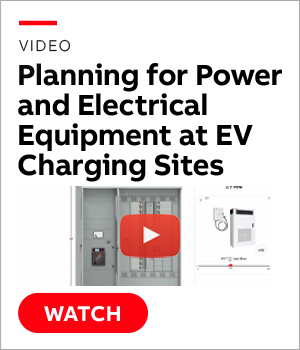Commercial Fleet EV Charging
Light, Medium & Heavy Duty Fleets
Fleet operators face unique challenges with electrical fleet conversions and EV infrastructure. ABB’s electrical distribution and energy management solutions are designed to address these challenges, ensuring seamless operations and long-term success.

Reliable and Scalable
Whether you’re equipping urban depots for electric light commercial vehicles or enabling charging for heavy duty tractor-trailers at a loading dock, ABB can help you design an electrical solution that enables scale in alignment with your EV fleet lifecycle planning. Mitigate risks of grid disruptions with ABB’s microgrid solutions, ensuring a stable power supply for uninterrupted fleet operations.

Future-Proof Infrastructure
As the EV fleet charging landscape changes, your unique commercial fleet site needs to be ready to adapt. Partner with ABB for future-ready solutions designed to enable your site to support evolving EV technologies, including Megawatt charging and Vehicle-to-Grid (V2G). With a lifetime of 20+ years, our charger-brand agnostic solutions ensure your infrastructure will support the next generation of chargers.

Cost Effective Solutions
Avoid peak energy costs and intelligently share power across all connected vehicles according to your operational priorities with ABB’s state-of-the-art energy management systems. Reduce operational costs through remote monitoring, diagnosing, and even remotely controlling your electrical infrastructure.

Invest in a Smarter, More Sustainable Future
Deploy ABB's energy management systems to balance grid demand and integrate renewable energy sources, such as solar power, to reduce your carbon footprint and energy costs further. Compare operational performance across multiple sites and make data-driven decisions to optimize energy efficiency.
Products and solutions
ABB offers EV fleet charging infrastructures that are scalable, modular, repeatable, and even stackable.

FAQs: Commercial EV Fleets
Why do electric fleet vehicles have a higher purchase price?
Electric fleet vehicles generally have higher upfront costs than their internal combustion engine (ICE) counterparts due to battery costs and limited production scale. However, the total cost of ownership (TCO) can be lower in the long run due to the cost of energy versus fuel, as well as maintenance cost savings.
According to BloombergNEF, light commercial electric vehicles, such as delivery vans, are estimated to cost 13% less over the life of the vehicle versus their ICE counterpart. Medium-duty commercial electric vehicles are currently comparable in TCO to ICE vehicles, while heavy-duty electric vehicles, such as those to support long-haul freight, are expected to reach price parity with ICE trucks by 2030. As the adoption of EVs increases and battery technology evolves, the cost of batteries is continuously decreasing for automobile manufacturers.
Do I have enough power available to charge my fleet?
An important input on evaluating the amount of power capacity needed is understanding which types and quantities of chargers will be needed and when charging is expected to occur. Charging should be aligned with the natural dwell periods of the fleet. For example, if a fleet will be parked 8-10 hours per day, high-powered fast chargers may not be needed. In this case, it may be possible to leverage lower-powered chargers, such as a 50kW DC fast charger, which can charge a 400kWh electric truck in 8-10 hours.
Alternatively, if that same truck only has a dwell period of 2 hours, a 200kW DC Fast Charger may be required. Once the quantity and types of EV chargers are identified, use ABB's free EV Grid-to-Charger Simulator to determine the amount of power needed for charging. This tool calculates the additional power required, which will be necessary for discussion with the utility to assess potential service upgrades.
What are the costs involved in installing charging infrastructure?
Setting up dedicated charging infrastructure at depots or hubs typically requires the investment in:
- EV Chargers ($1000-$3000 for AC charger, $20k to $150k for DC chargers)
- Electrical distribution equipment (varies significantly considering the size of fleet)
- Installation costs (varies by fleet size)
- Software and networking ($75-$500 per charger annually, depending on type)
- Maintenance and support contracts ($300-$1000 per charger annually, depending on type)
There may be some state, federal, or utility incentives and rebates available to offset some of these costs.
Where can fleet owners find support for evaluating operational impacts?
- OEM tools: Use route simulation tools tailored to electric powertrains.
- Consultants: Engage experts like the Center for Transportation and the Environment.
- Peer learning: Connect with other fleet operators at events such as Advanced Clean Transportation (ACT) or through industry groups like North American Council for Freight Efficiency (NACFE).
- Master planning: Hire consultants to develop staffing and operational transition plans.
- Utility collaboration: Work with utilities for feasibility studies and support.
What are the key considerations for planning EV charging infrastructure?
- Align with operations: Charging should be aligned as much as possible with the natural dwelling period of the fleet to minimize disruption to service commitments.
- Depot vs. on-route charging: Consider space, dwelling time and locations, cost of energy, capital investment feasibility, people resource availability.
- Futureproofing: EV chargers have a typical lifetime of 10 years. The electrical distribution equipment can last 20-30 years or more. Intentional design of the electrical distribution and working with technology experts like ABB can ensure the electrical equipment is future-proofed for multiple generations of EV chargers.
- Maintenance and repair: long-term service contracts are recommended for EV chargers, keep critical spare parts in local stock.
How should fleets approach a staged rollout of charging infrastructure?
- Scalable design: Consider a modular EV charging solution that enables additional connectors to be added over time.
- Electrical contractor engagement: Coordinate early for futureproofing of the electrical distribution system. Consider oversizing the circuit breakers for future generations of EV chargers, but with adjustable trip settings for the current generation of EV chargers. Ask an electrical contractor to collaborate with their technology suppliers, such as ABB, to develop a system that is future-proof for megawatt charging.
- Smart charging and energy management: Consider EV charging load management solutions that can be integrated into the electrical distribution equipment. This can provide a charger-agnostic approach to enabling additional charging connectors to be added to the site without increasing the power required by the utility. Due to battery protection controls within electric vehicles, EV chargers rarely operate at their maximum capacity, and it is unlikely that all chargers would be operating at their maximum power simultaneously. Therefore, EV charging load management can be leveraged to enable the addition of more connectors to the site without requiring additional power.
How can fleets manage energy costs and work with utilities?
- Rate structures: Secure Time-of-Use (TOU) rates and demand charge mitigation
- Smart charging: Integrate charger-agnostic EV charging load management into your electrical distribution solution, such as those available from ABB.
- Energy storage: Use batteries to smooth demand and reduce costs.
- Utility partnerships: Explore incentives and cost-sharing opportunities.
What are best practices for maintaining EVs and charging infrastructure?
- Plan during procurement: Include maintenance and software in electric vehicle and EV charger selection.
- Extended warranties: Invest in warranties for both vehicles and chargers.
- Service agreements: Ensure SLAs are in place with vendors.
- Training: Train staff on high-voltage safety and EV-specific systems.
- Spare parts: Stock parts and tools upfront.
EV Grid-to-Charger segments

Commercial fleet EV charging
